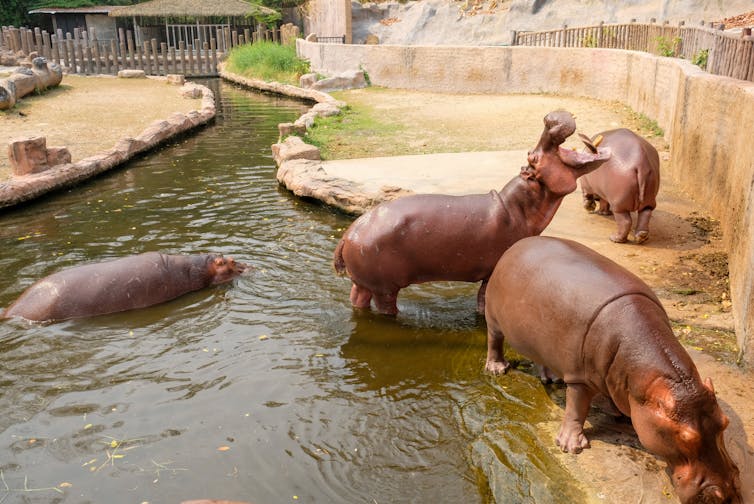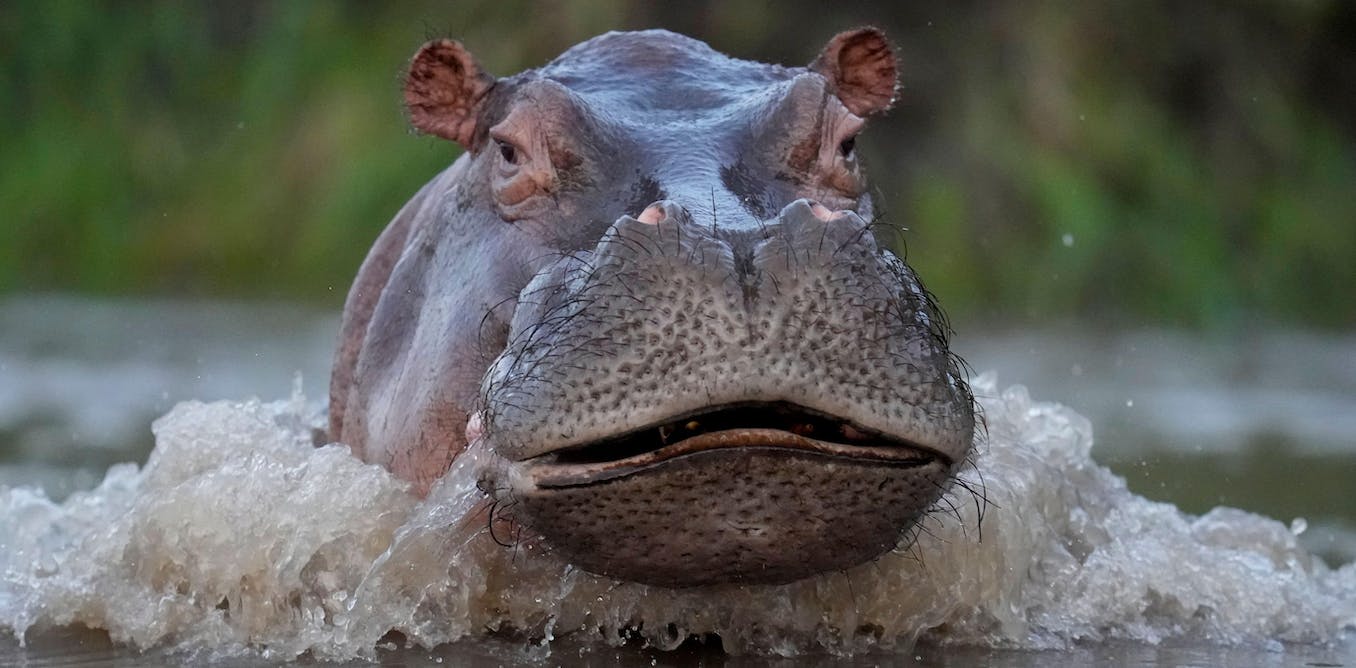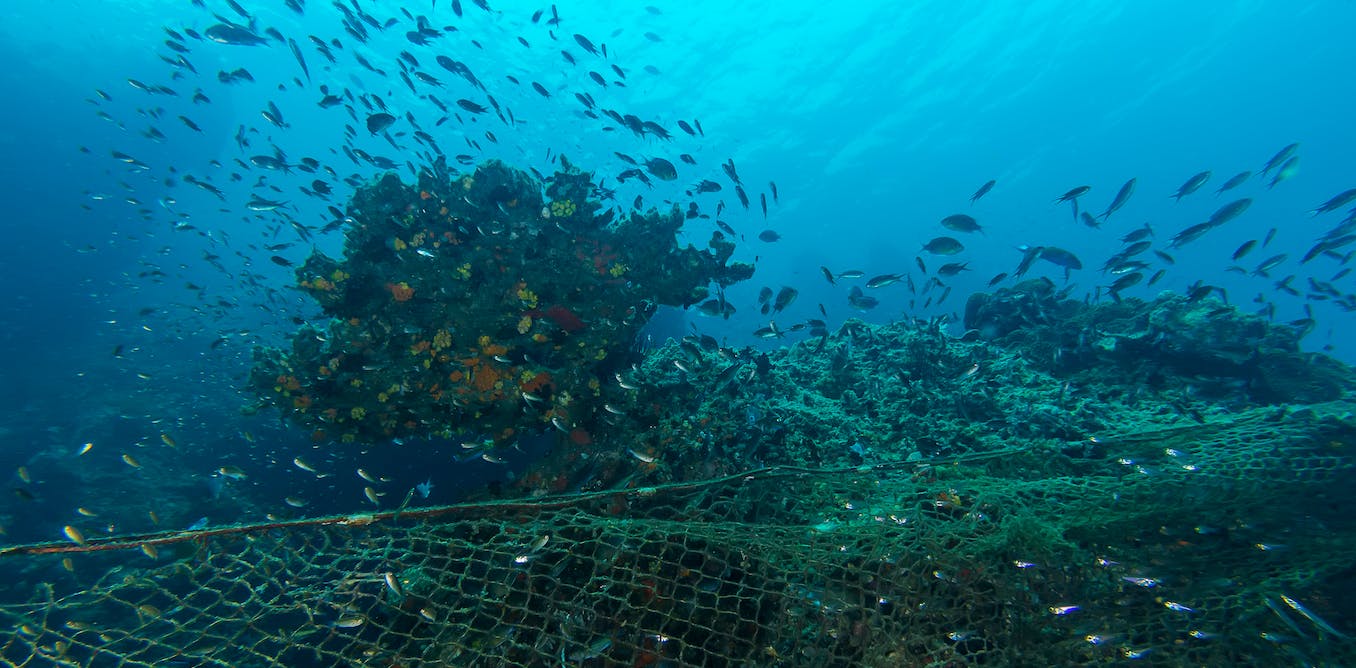Last week, Colombia recorded its first road traffic incident involving a hippopotamus. A car collided with the animal at speed leaving it dead on the road.
The hippo was a descendent of the four animals that notorious drug lord Pablo Escobar imported from a zoo in the US to his luxurious Hacienda Nápoles estate in Colombia in the 1980s. The four hippos, which included three females and one male, were abandoned after Escobar’s death in 1993 due to the difficulty associated with moving them to a wildlife sanctuary. The hippos then escaped the untended estate and spread along the Magdalena River.
They have since bred and have multiplied to around 130 animals. But in the wild, the hippos are fast becoming a problem. Hippo attacks on people are on the rise and an illegal trafficking industry has developed around their capture and sale.
Ecologists also warn that large herbivores such as hippos are upsetting Colombia’s delicate aquatic ecosystems. By excreting waste into lakes and rivers, hippos can change the composition of the surrounding water. This water provides habitat for animals including manatees and capybaras.

FICG.mx/flickr, CC BY-NC-ND
The hippos are now officially listed as an invasive species that need to be controlled. But how to best manage them has long troubled the country’s environment ministry.
Managing Escobar’s hippos
In 2009, the Colombian environmental agency ordered hunters to kill three hippos amid concerns they were damaging crops and endangering humans. A hippo, nicknamed Pepe, was killed as a result. Photos of the dead hippo went viral and sparked a global outcry.
The culling promptly ended and the fate of the remaining hippos is now to be decided by two ongoing legal cases. I have analysed both cases as part of my research and it’s my opinion that they are evidence of good practise in controlling invasive species. This is because the interests of the animals are being considered – a luxury that is not afforded to most invasive animal species.
Three strategies have been proposed to control Colombia’s hippo population: euthanasia, relocation to zoos and animal sanctuaries abroad and fertility control.
Euthanasia represents the cheapest and fastest method to control Colombia’s hippo population. It is, however, a controversial strategy and would involve up to 30 hippos a year being killed. Those who oppose the strategy argue that it is clearly not in the interests of the hippos.
The relocation programme instead involves moving 70 hippos to zoos and animal sanctuaries in India and Mexico that are capable of caring for them. But hippos are aggressive and very large, so they are difficult to capture and transport. Many of those that remain will therefore have their fertility controlled.
The fertility control programme will use a drug called Porcine Zona Pellucida to reduce the fertility of the female hippos. The same drug is used to control hippo birth rates in zoos. Such a strategy will reduce wild hippo numbers over longer periods of time and will eventually lower the threat they pose to people and the environment.
Used together, the fertility control and relocation strategies would help to control Colombia’s hippo population. And, though the animals would be in captivity or unable to raise offspring, the plans are more humane than the alternative of being killed.

Mai.Chayakorn/Shutterstock
Good invasive species management?
These are not perfect solutions. Controlling hippo fertility will not immediately reduce the wild population. As a result, it risks prolonging the threat of conflict between humans and hippos. It also does little to protect the environment in the short term.
Research also suggests that between 70% and 80% of Colombia’s wild female hippos will need to be sterilised for the strategy to be effective. Sterilising this amount of hippos would eventually stabilise the population. But how long this would take has not yet been disclosed.
Both of these strategies are expensive. Relocating the hippos will cost around US$3.5 (£2.8) million, and fertility treatment costs US$50,000 for each hippo. Funding may be diverted away from conservation efforts elsewhere in favour of humanely tackling Colombia’s rising hippo population.
Moving Forward
Invasive species tend to be perceived as threats which need to be exterminated. Many countries allow invasive animals to be killed by any means necessary to control their population. Policies carried out with the aim of controlling these animals are therefore often unethical.
The Colombian hippo case demonstrates that invasive animal species can be controlled and have their interests taken into account at the same time. But it is important to recognise that when compared to other invasive species, these hippos may have been given preferential treatment. This likely stems from the high-profile nature of the case that, given its association to Pablo Escobar, has captured the attention of the public.
There are, however, some aspects of the Colombian hippo case that could be applied to invasive species management more broadly. When euthanasia is the preferred option, choosing methods that limit animal suffering should be prioritised.
Grey squirrels, for example, are considered a pest species within the UK and can be legally killed using methods such as poisoning and traps. But more humane alternatives, such as using oral contraceptives, exist that would also keep their population in check.
Grey squirrels: is birth control the solution to Britain’s invasive species problem?
Colombia’s wild hippo population has become a problem. Inevitably, the species will need to be managed to avoid further harm to the animals, the wider environment and to prevent conflict with humans.
The case of Pablo Escobar’s invasive hippos is unique. Yet it could be seen as a step in the right direction for invasive species management. Despite the preferred management options being expensive and often failing to immediately curb the animals spread, they avoid unnecessary killings and encourage more creative solutions to emerge.




